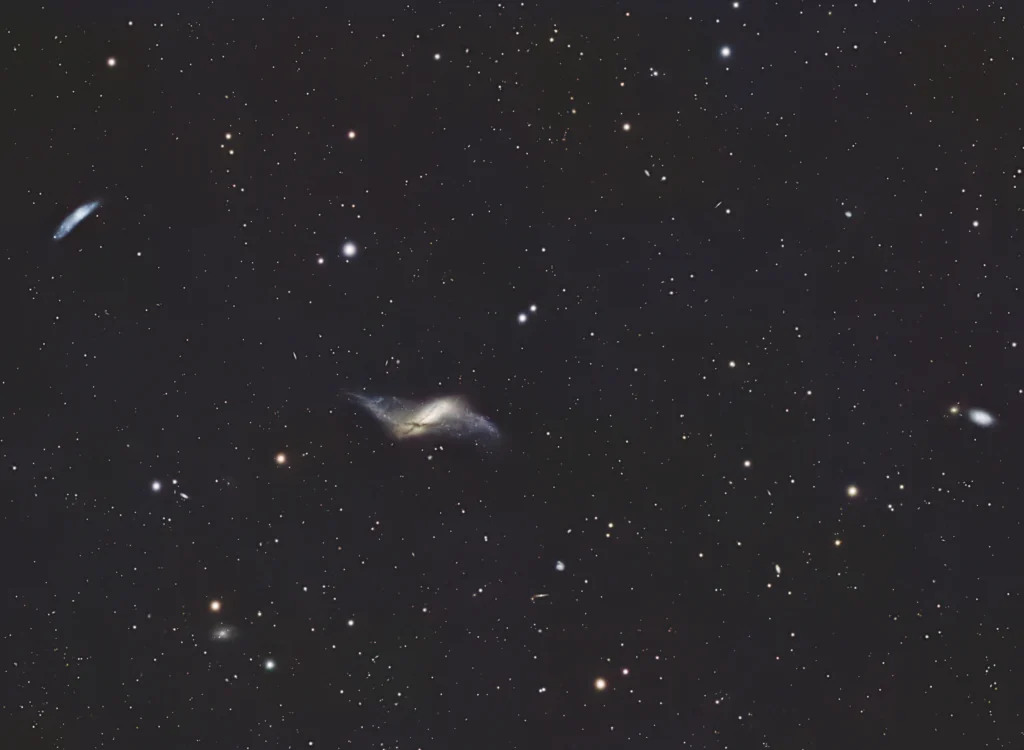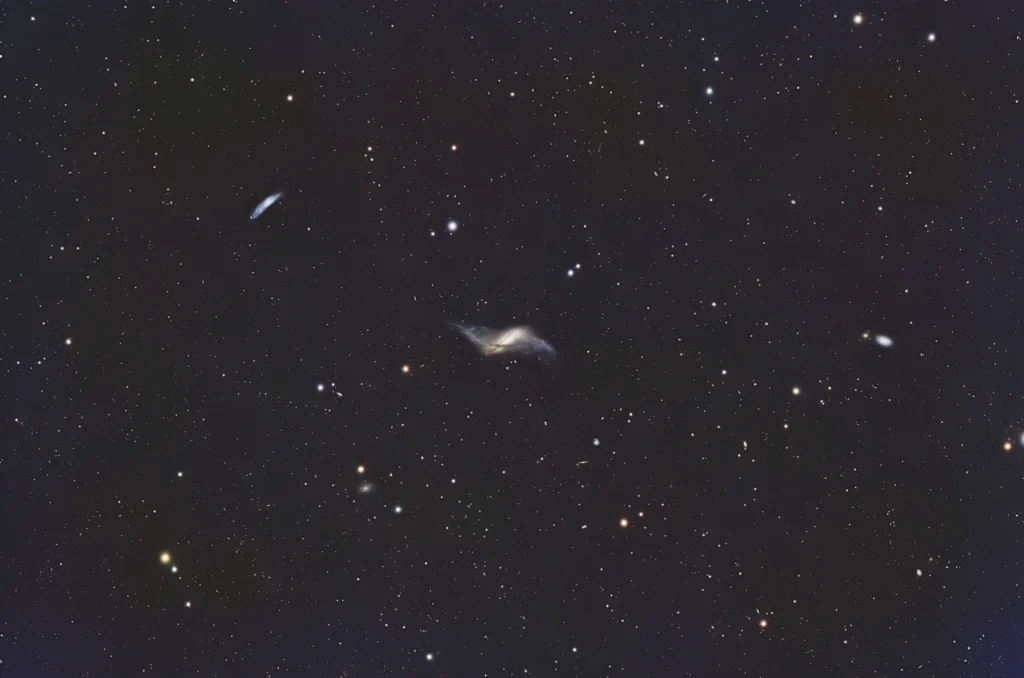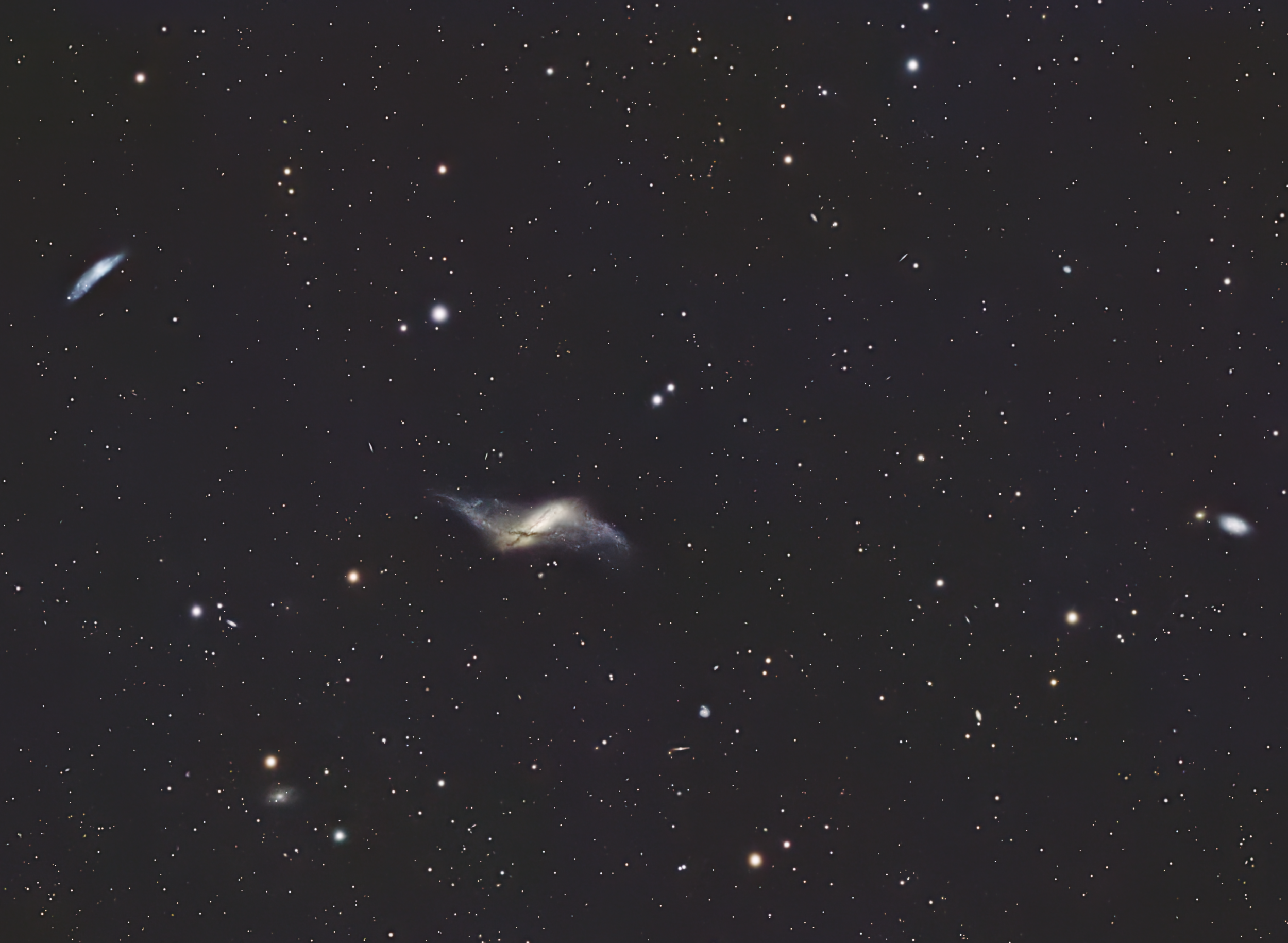

Wikipedia Description: NGC 660 is a peculiar and unique polar-ring galaxy located approximately 45 million light-years from Earth in the Pisces constellation.[3] It is the only such galaxy having, as its host, a “late-type lenticular galaxy“.[4] It was probably formed when two galaxies collided a billion years ago.[5] However, it may have first started as a disk galaxy that captured matter from a passing galaxy. This material could have, over time, become “strung out” to form a rotating ring.
The ring is not actually polar, but rather has an inclination from the plane of the host disk of approximately 45 degrees.[4] The extreme number of pinkish star-forming areas that occurs along the galaxy’s ring could be the result of the gravitation interaction caused by this collision. The ring is 50,000 light-years across – much broader than the disk itself – and has a greater amount of gas and star formation than the host disk. This likely indicates a very violent origin. The polar ring contains objects numbering in the hundreds, many of which are red and blue supergiant stars. The most recently created stars in the ring are approximately 7 million years old. This indicates that the formation of these stars has been a long process and is still occurring.
Late in 2012, this polar-ring galaxy produced an enormous outburst having a magnitude of approximately ten times brighter than a supernova explosion. The cause is not certain, but this event may have resulted from a tremendous jet being emanated from the galaxy’s central black hole.[5]
Acquisition Details:
| Telescope | Takahashi TOA-130 |
| Optics | Takahashi TOA-645 Flattener |
| Filter | None |
| Camera | ASI2600MC Pro OSC |
| Integration Time | 7.5 hours |
| Subframes | 150 x 180 seconds |
| Date | October 15, 2025 |
| Location | Carlsbad, California |
